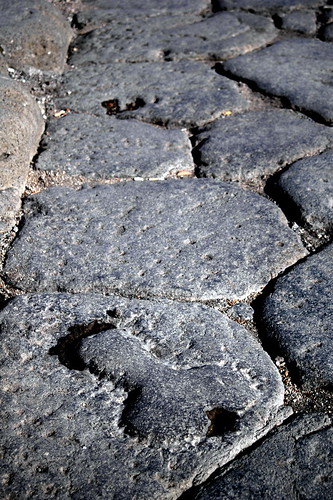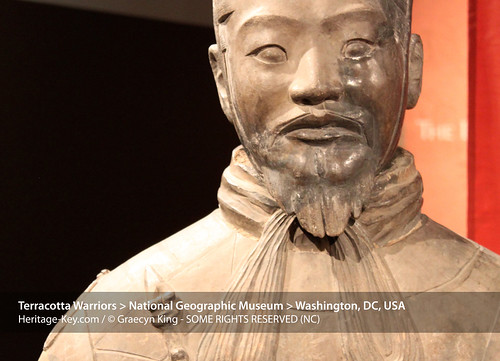 Did ‘mummy paper’ – paper made out of recycled mummy bandages – exist for sure? Worchester librarian S.J. Wolfe believes it is not the myth historians believe it to be. Ms Wolfe recently published her book ‘Mummies in Nineteenth Century America’ about the import of mummies in the USAin the 1800’s. Her research into what happened to these 560 ‘honorary guests’ to the USA’s carnivals and exhibitions (often further dismemberment and a travelling life) lead the researcher to what she calls a smoking gun: proof that ‘mummy paper’ is not an urban myth.
Did ‘mummy paper’ – paper made out of recycled mummy bandages – exist for sure? Worchester librarian S.J. Wolfe believes it is not the myth historians believe it to be. Ms Wolfe recently published her book ‘Mummies in Nineteenth Century America’ about the import of mummies in the USAin the 1800’s. Her research into what happened to these 560 ‘honorary guests’ to the USA’s carnivals and exhibitions (often further dismemberment and a travelling life) lead the researcher to what she calls a smoking gun: proof that ‘mummy paper’ is not an urban myth.
Mummy-recycling was a popular passtime or even main profession in 19th century Egypt. As mummies weren’t that rare (you did read this story in the Onion, right?) yet back then, a whole army of the ancient Egyptian dead was available to make a profit from: first you raid the tomb, then make sure to undress your mummy to find any valuables that – hopefully – are inside, after which you sell the rags and grind up the bodies for fertilizer (if you were lucky, you could also sell an arm or a leg for medicinal purposes, as mummy limbs were believed to have certain healing powers, yes, also in Europe).
What does this have to do with mummy paper? You would take a solid American tree and make paper out of that one, rather than importing rags from Egypt? The idea of using mummification bandages to make paper might sound ridiculous, but before paper manufacturers began using wood pulp to make paper in the late 1850s, paper was manufactured exclusively from rags. Several American paper manufacturers in Maine and Connecticut were believed to have imported ‘Egyptian rags’ to make paper. But the evidence was anecdotal and largely confined to newspaper clippings, which many historians dismissed as unreliable.
S.J. Wolfe, during her research into mummy-related early 19th century events, stumbled upon a broadside printed in Norwich, Connecticut, for that city’s bicentennial celebration in 1859. This particular broadside for Norwichs bicentennial was printed by the Chelsea Manufacturing Co. (Chelsea is a village in Norwich), one of New Englands largest paper manufacturers. Wolfe told The Telegram what the fineprint on the ad says:
The material of which this is made was brought from Egypt, reads text at the bottom of the broadside. It was taken from the ancient tombs where it had been used in embalming mummies. A part of the process of manufacturing is exhibited in the procession.
Definitely a lucky find, this fineprint might not be undeniable proof that ‘mummy paper’ is actually made out of mummy – there’s still the possibility it was a 19th century marketing stunt – but it means we’d definitely have to consider the option that the production of paper out of ancient Egyptian rags is more than just urban myth. Folks, do check all your early 19th century bibles (my family definitely holds a few) for references to ancient Egypt outside the Old Testament! You might just discover your holy book is made out of (linen bandages inscripted with) the Book of the Dead. 😉

 The blockbuster exhibition ‘King Tut and the Golden Age of the Pharoahs’ will not tour Australia because museums cannot afford it – not surprisingly if you look at the price tag. Egypt wants to prolong the world’s most successful tour of artefacts from the tomb of the boy-king but offers to host the exhibition have been underwhelming, to say the least. The Director of the Australian Museum, Frank Howarth,
The blockbuster exhibition ‘King Tut and the Golden Age of the Pharoahs’ will not tour Australia because museums cannot afford it – not surprisingly if you look at the price tag. Egypt wants to prolong the world’s most successful tour of artefacts from the tomb of the boy-king but offers to host the exhibition have been underwhelming, to say the least. The Director of the Australian Museum, Frank Howarth, 
 Dr. Zahi Hawass is coming to London, to promote the massive – you can take that quite literally – art book ‘A Secret Voyage’ and the more normal-sized – but still stunning, we’re sure – ‘Inside the Egyptian Museum with Zahi Hawass’. To the list of must-attend events is now added a book signing at the most famous Egyptian-owned location in London:Harrods.
Dr. Zahi Hawass is coming to London, to promote the massive – you can take that quite literally – art book ‘A Secret Voyage’ and the more normal-sized – but still stunning, we’re sure – ‘Inside the Egyptian Museum with Zahi Hawass’. To the list of must-attend events is now added a book signing at the most famous Egyptian-owned location in London:Harrods. How does one transport a 1.8 million-year-old skull that might rewrite the history of mankind and has never before left the vault of the National Historic Museum in Tbilisi, Georgia? Very carefully, of course! The only person allowed to travel with the The ‘Dmanisi Skull’ – which suggests a Eurasian chapter in the long evolutionary story of man – is Professor
How does one transport a 1.8 million-year-old skull that might rewrite the history of mankind and has never before left the vault of the National Historic Museum in Tbilisi, Georgia? Very carefully, of course! The only person allowed to travel with the The ‘Dmanisi Skull’ – which suggests a Eurasian chapter in the long evolutionary story of man – is Professor  One skull stands out for being extremely well-preserved, even the jawbone is intact and has become known as the ‘Dmanisi Skull’. It is thought this skull belonged to a 20-year-old man of about 1 meter 40 centimetres in height.
One skull stands out for being extremely well-preserved, even the jawbone is intact and has become known as the ‘Dmanisi Skull’. It is thought this skull belonged to a 20-year-old man of about 1 meter 40 centimetres in height.
 Museums from Italy, Germany, Austria, Hungary, Romania, Bulgaria and Greece have joined hands – and virtual artefacts – to create the first ‘Virtual Museum of European Roots’. They have put their most treasured objects online in 3D for visitors to explore in several thematic routes, as they are guided through European prehistoric culture and heritage. For museum professionals, there are e-courses, training them in the skills needed for establishing and managing a virtual museum.
Museums from Italy, Germany, Austria, Hungary, Romania, Bulgaria and Greece have joined hands – and virtual artefacts – to create the first ‘Virtual Museum of European Roots’. They have put their most treasured objects online in 3D for visitors to explore in several thematic routes, as they are guided through European prehistoric culture and heritage. For museum professionals, there are e-courses, training them in the skills needed for establishing and managing a virtual museum.